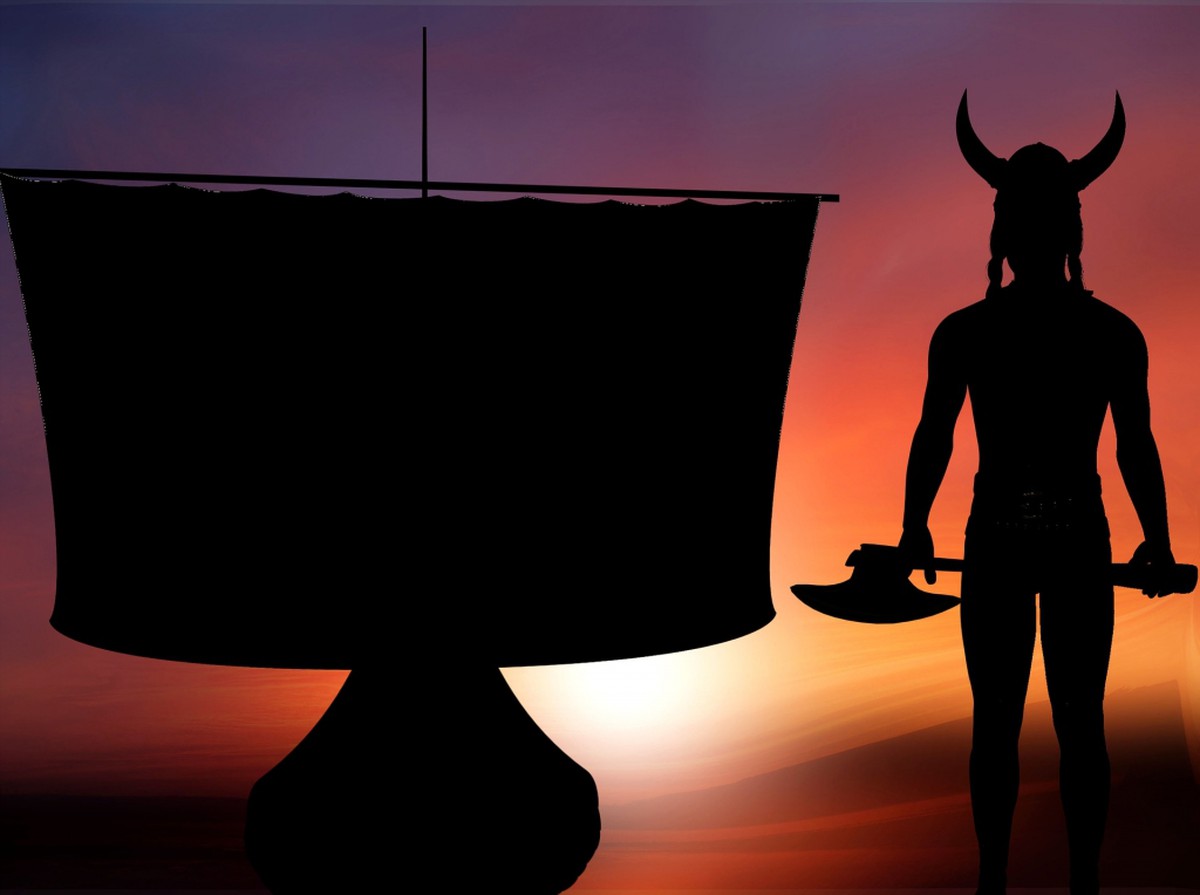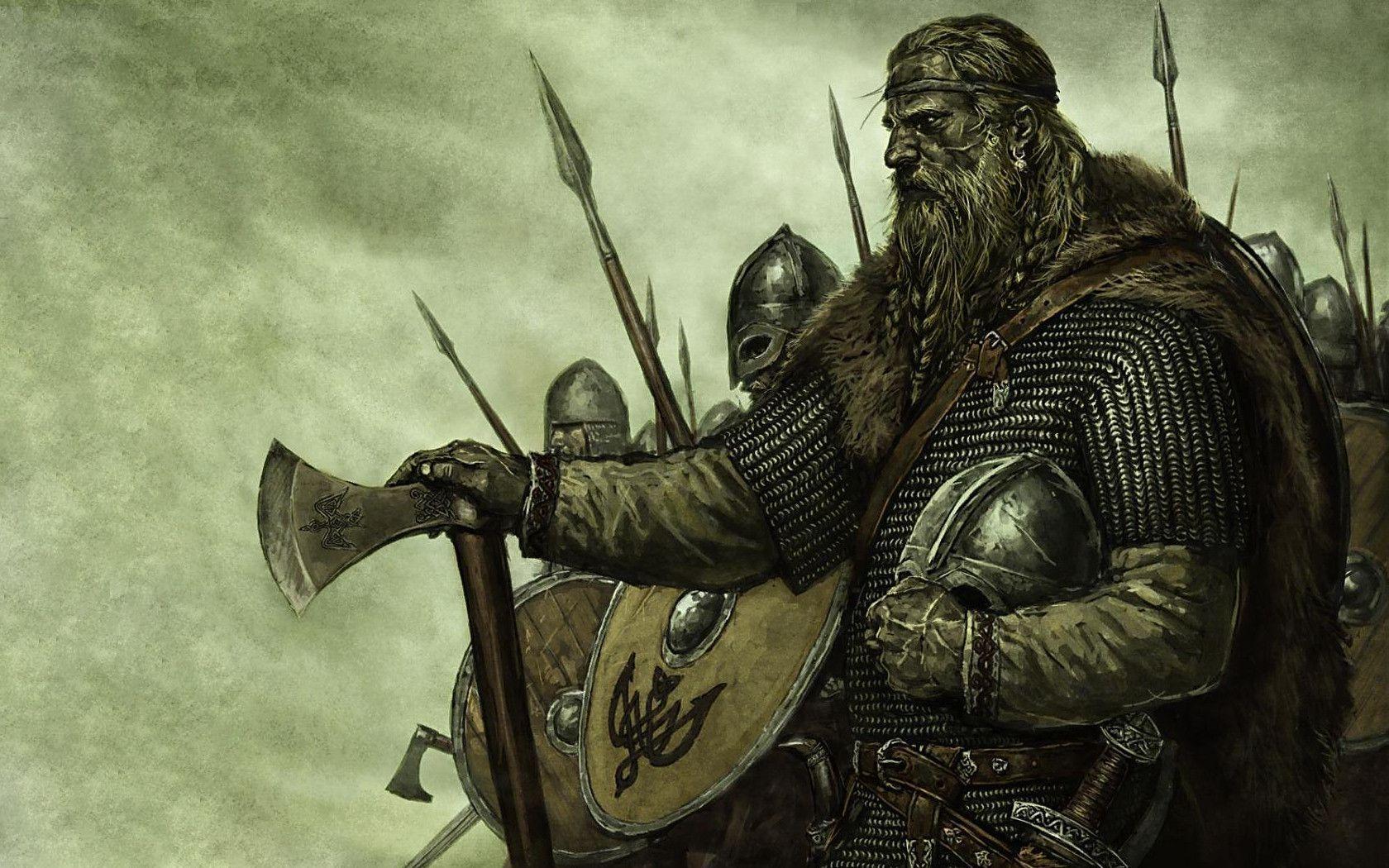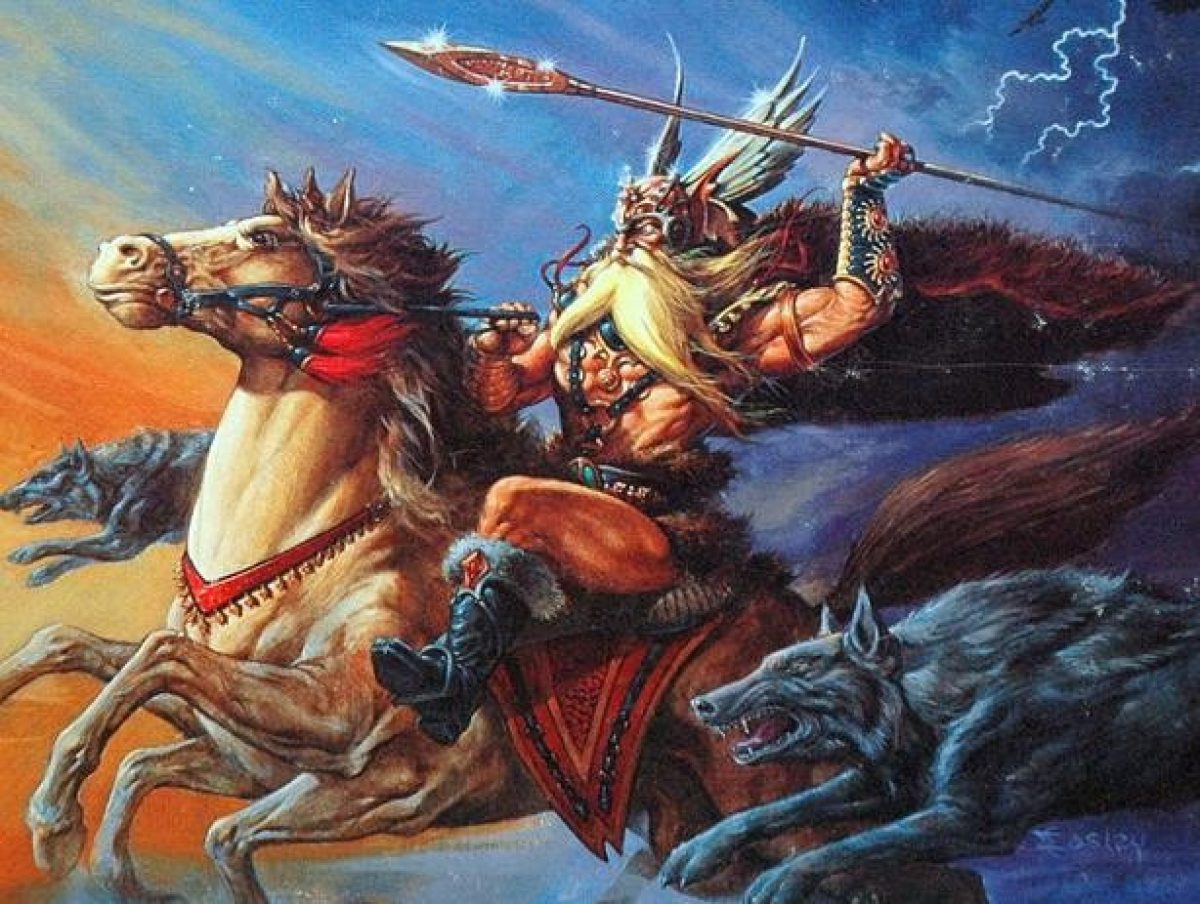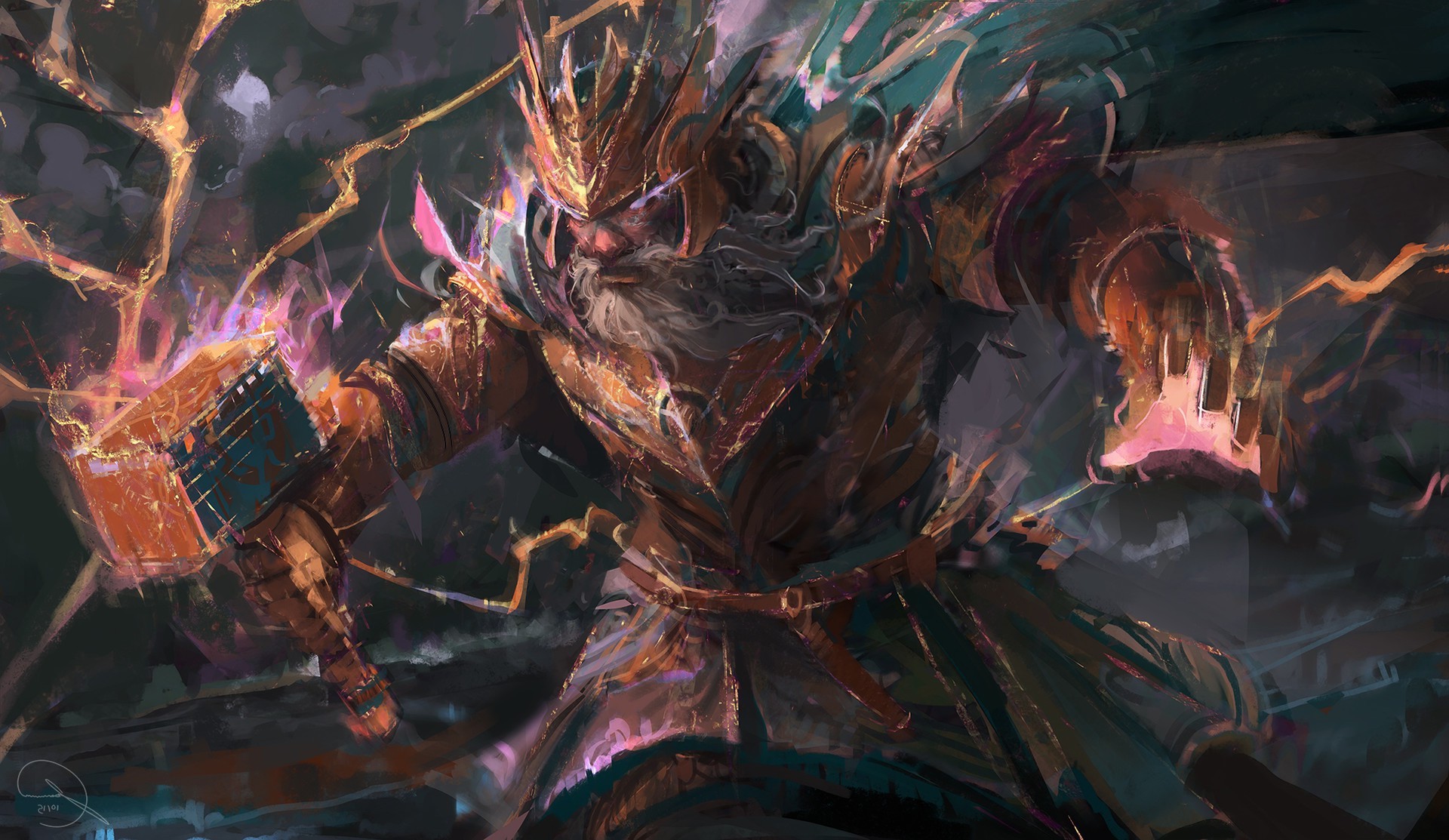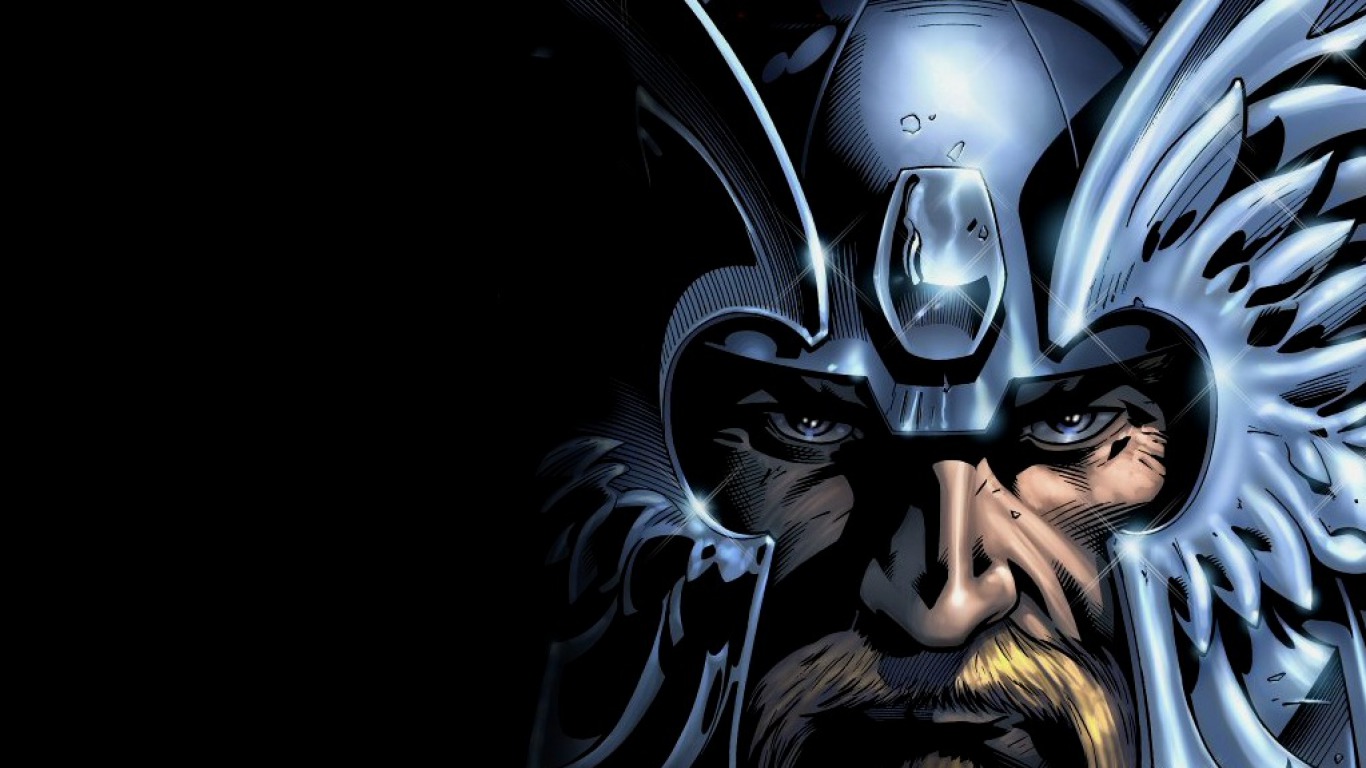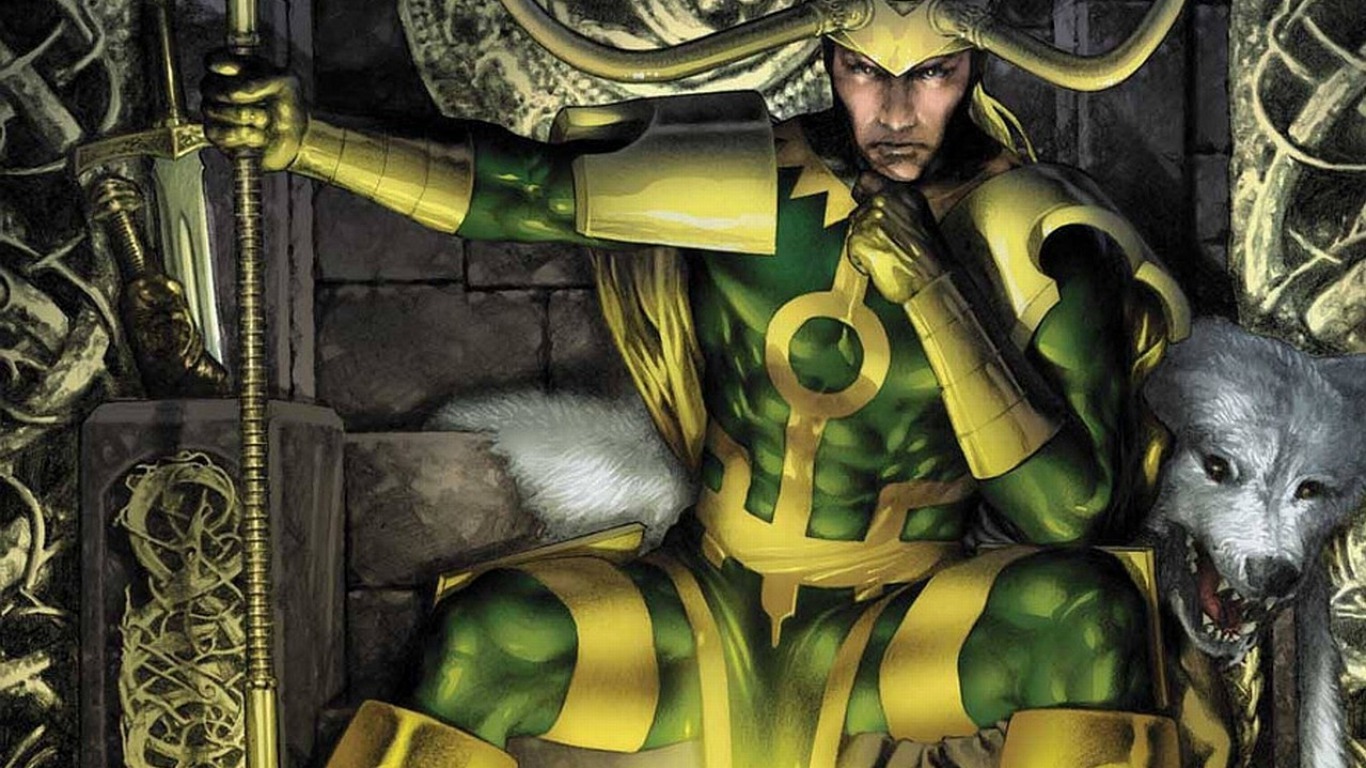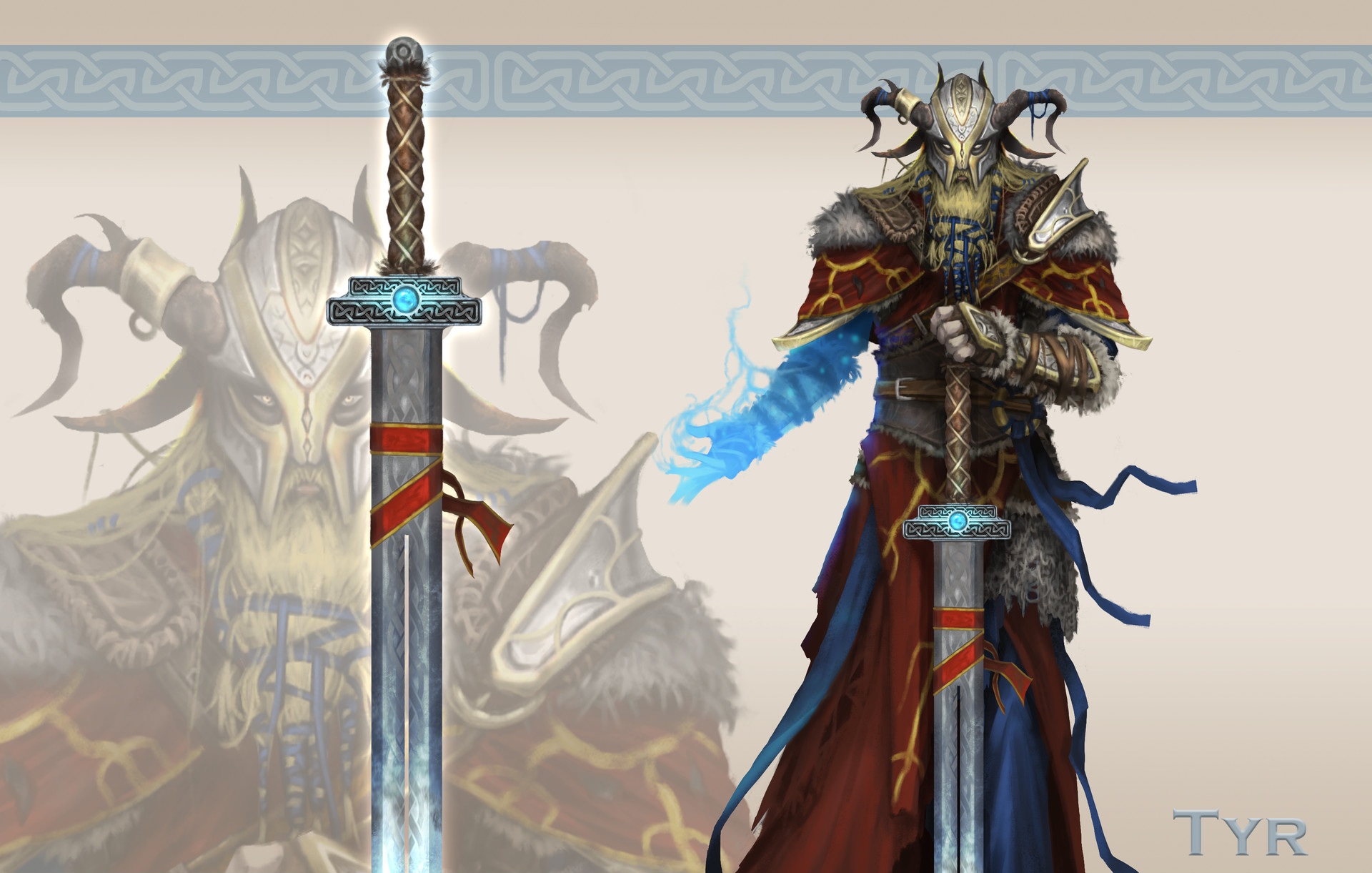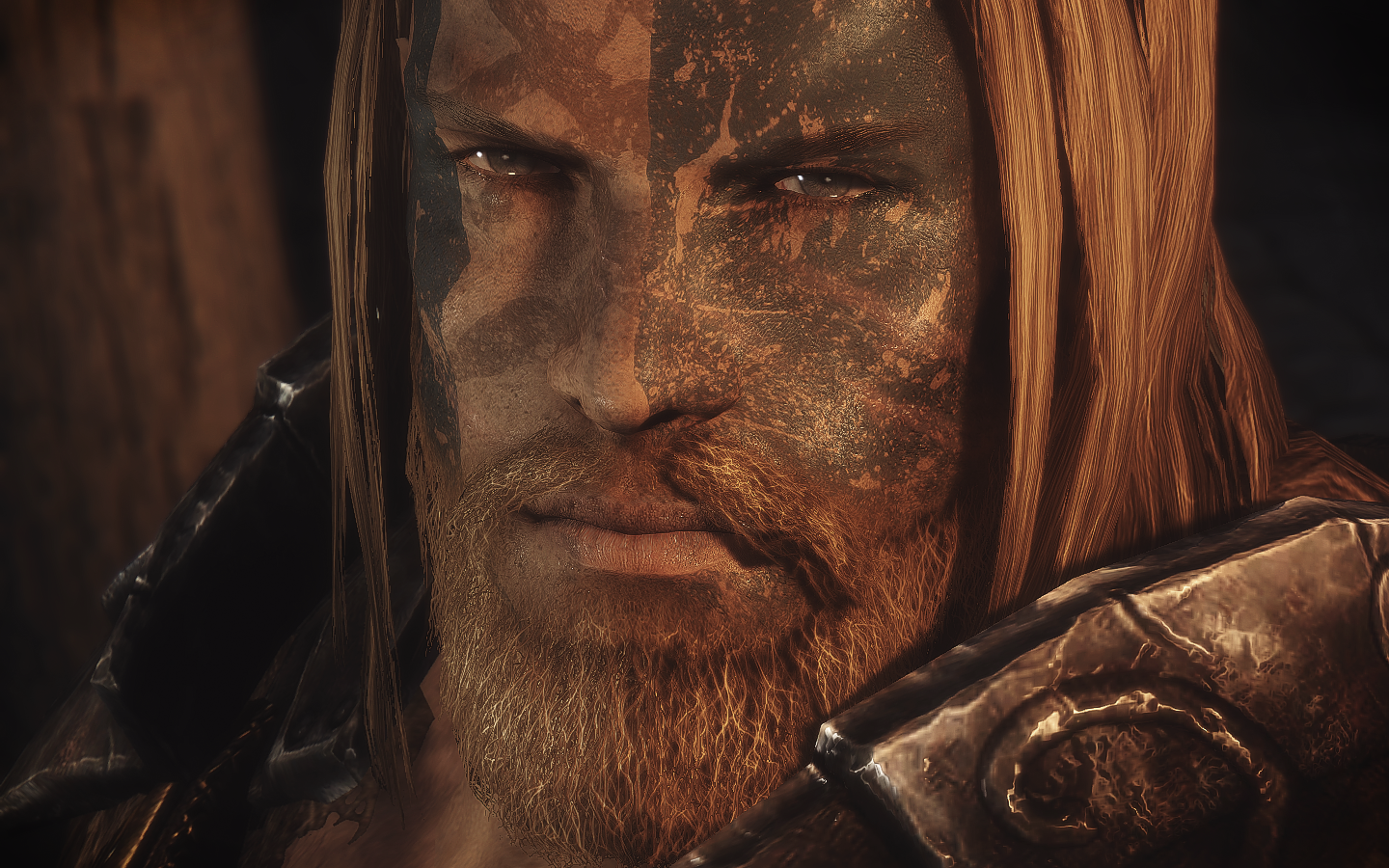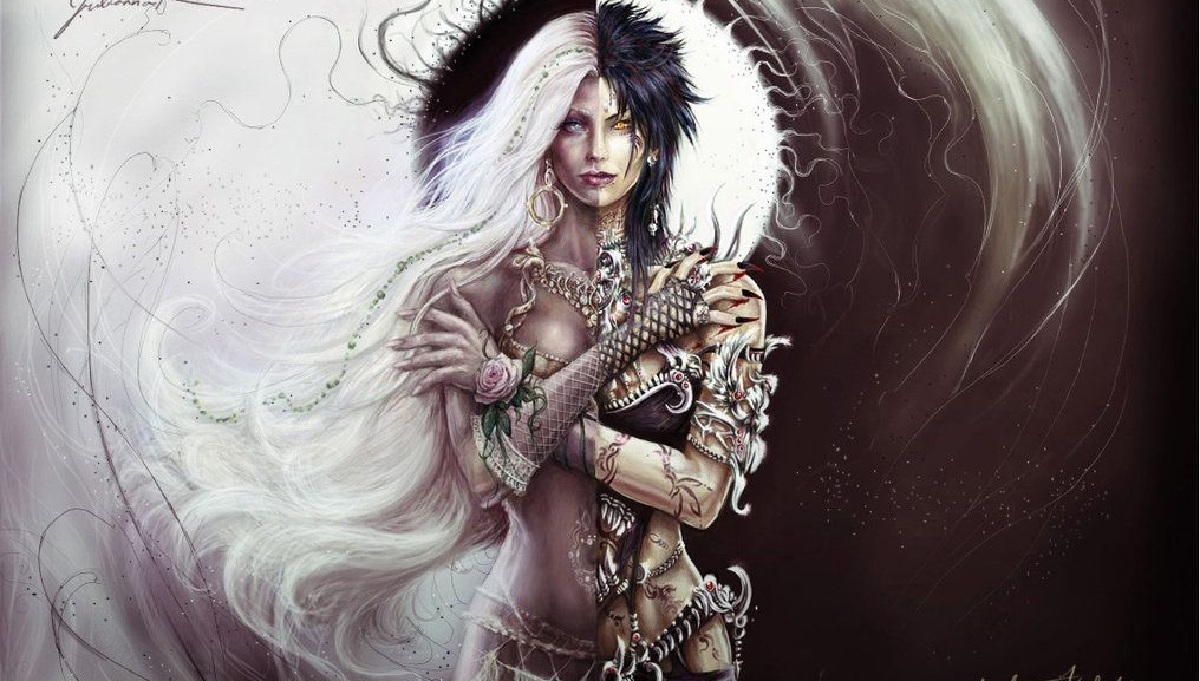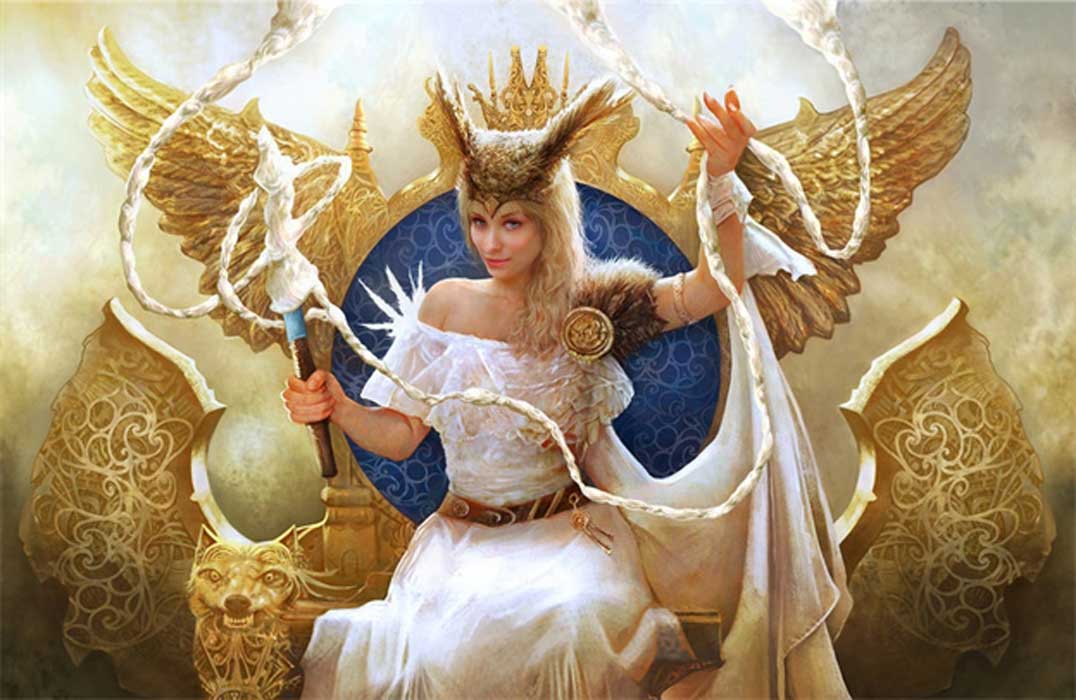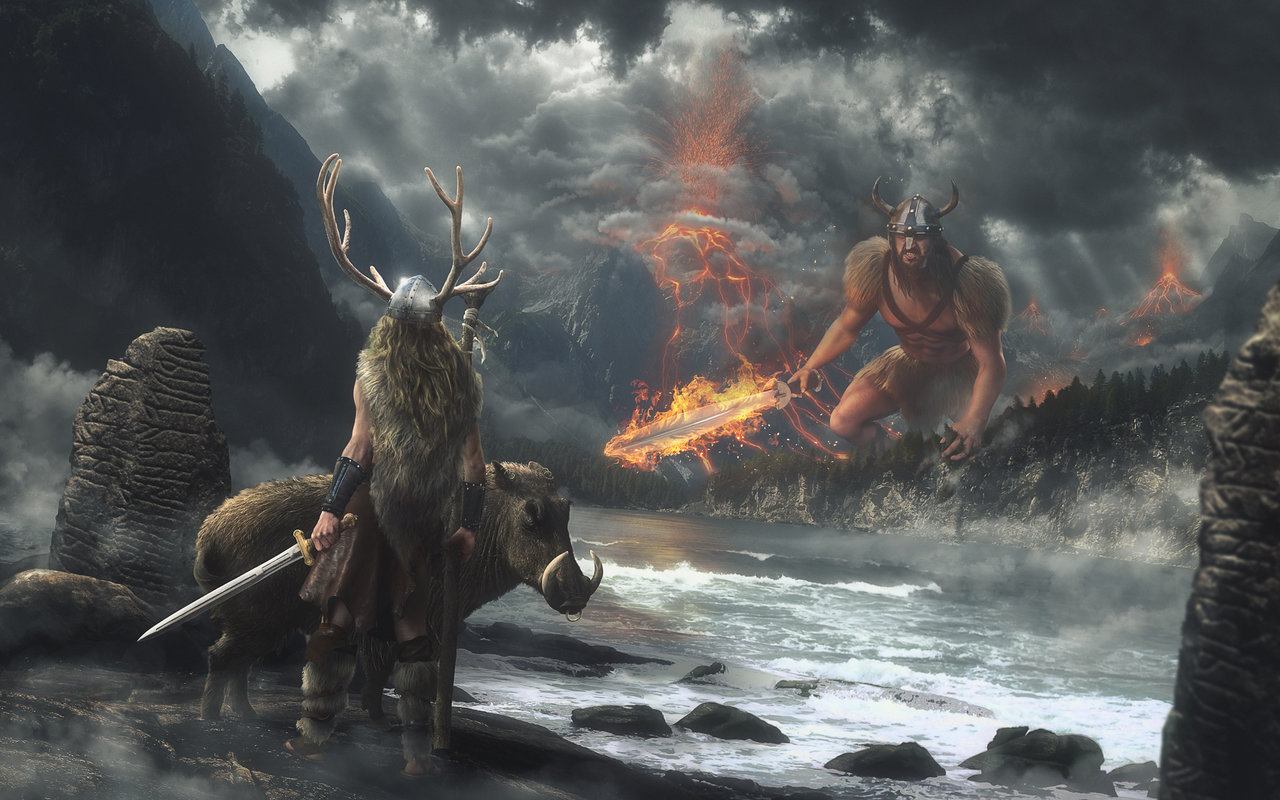Norse mythology is a beautiful and at the same time cruel world. A world made up of many interesting and instructive myths. Their religion and creation story, like their home, is capricious and combative. the world of norse gods full of adventures and exploits that make you think hard.
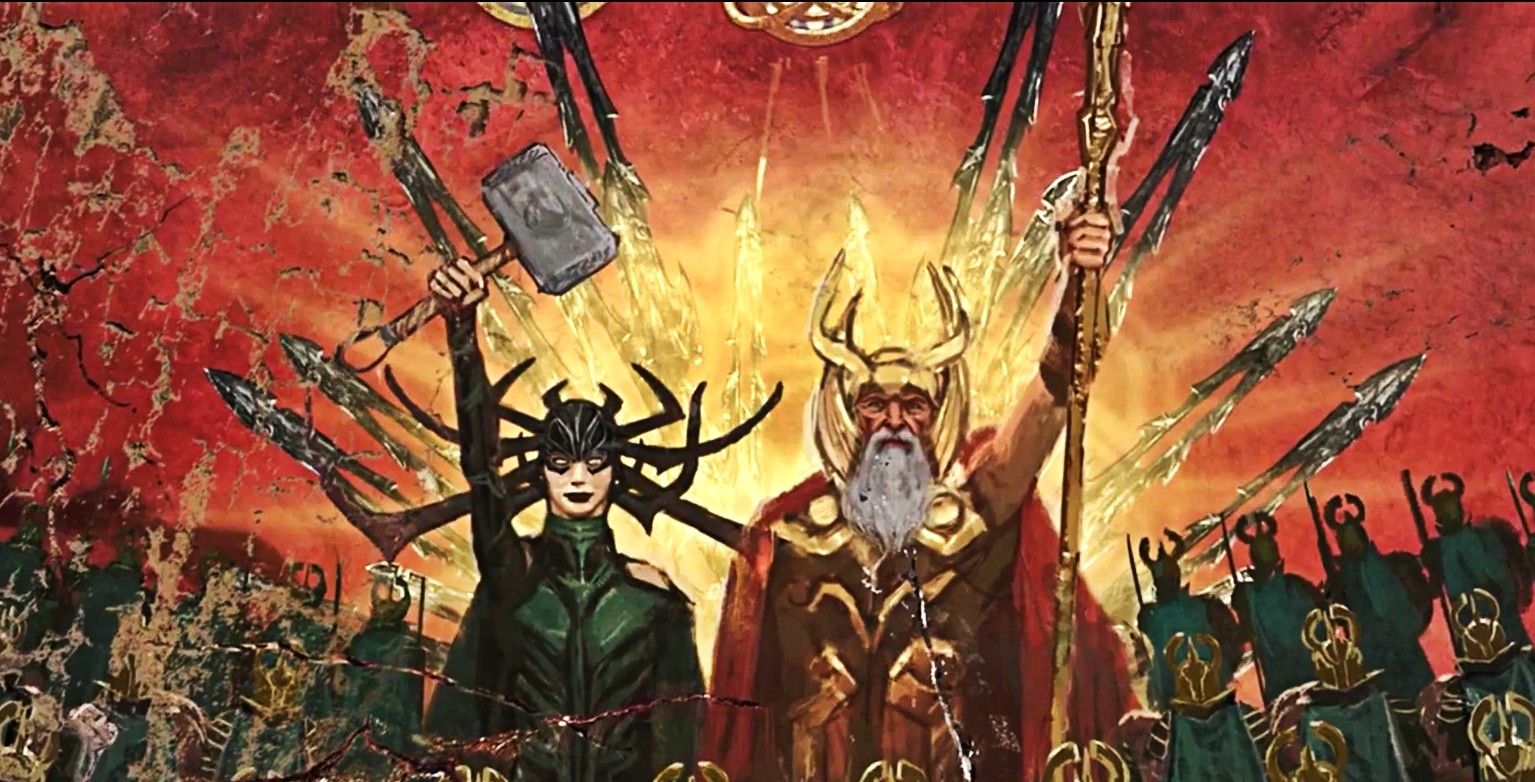
norse gods
The Norse gods appear before us not only as wise and all-powerful rulers of human destinies, but also as ordinary people. They often make completely human mistakes, resort to deception, act petty and unfair, love cruelty and laugh at other people's problems.
It all started in a huge abyss known as Ginnungagap. The abyss was in the center, and to the south and north were the realm of fire and the realm of the dead respectively. Here, in this inhospitable area, life arose from ice and fire. The first living creature to form was Ymir, a huge ice giant. Soon after, Buri emerged: a god. Buri had sex with a giant and that's where Odin came from. Odin killed Ymir and used his body to furnish the earth.
The giant's blood filled the seas and rivers. His bones became mountains and his flesh became the earth. The giant's skull formed the sky. The dwarves of the North, South, West and East held that sky above their heads so that it would not fall. When the earth was finished, Odin created dwarves and humans. The people were placed in Midgard, behind a fence made from Ymir's eyebrows. The gods settled in Asgard. A place that people could only reach through a bridge: the rainbow.
Mythology of the Norse Gods: the Aesir
In all mythologies there are usually beings that are different from humans. There are gods, giants and other figures in the mythology of the Nordic countries. However, unlike the one god of Christianity, the Norse gods are neither infallible nor do they represent absolute good. Norse mythology is divided into three genres:
- ASESAccording to Norse belief, the Aces live in Asgard, the seat of the gods. They are mainly warlike and powerful gods that are characterized by their strength, skill in battle and their command. Important and well-known male aces include, for example, the father god Odin, the thunder god Thor, the cunning god of lies Loki, the light god Baldur, or the guardian of the bridge Hiemal.
- Assins. Some goddesses also have their seat in Asgard, so among the Asins are Odin's wife Frigg, the goddess of the underworld Hela, the goddess of poetry, Saga, the goddess of the harvest Sif, the goddess of medicine , Eir, or the goddess of wisdom, Snotra.
- The Vanir residing in Vanaheim are considered the oldest family of gods, in contrast to the warrior lord, they are considered gods of the hearth fire and are responsible for fertility, earthly connection, and prosperity. Among the Vanir are, for example, Freyr, the god of heavenly light, Freya, the goddess of love and beauty, or Kvasir, the god of knowledge, who has an answer to all questions.
ASES
The Aces is the youngest family of gods residing in Asgard. They are warrior deities, to whom properties such as strength and power are attributed. Aesir are mortal, they only stay young with apples from Idun, goddess of immortality. Among the main members of the aces we have:
Odin
Odin, the father of the gods, is the most important figure of the Norse sky gods and, according to tradition, probably also the most complex figure in Norse mythology, around whom many different myths and stories are intertwined. While the term "Odin" is used primarily in the North Germanic area, the supreme deity of the Aesir and the Germanic world of gods is generally known as "Wodan" or "Wotan" in the South Germanic area lore.
The mighty father of the gods is characterized in particular by his omnipresent wisdom and his great thirst for knowledge: the two ravens Hugin and Munin sit on his shoulders, who tell him everything they have discovered about world events on their messenger flights. Because of them, the supreme god of the Vikings is also known as the Raven God. It is significant that the names of birds are translated using the terms "thought" and "memory."
The quest for knowledge, truth, and insight is characteristic of Odin and is considered one of his most important and formative character traits. For example, Odin even sacrificed half his sight for the love of wisdom: he visited Mimir, the keeper of a primordial source of wisdom under the world tree Yggdrasil, and asked for a drink from the well, whose water gives him knowledge and perception.
As a sacrifice for the achievement of this truth, the Father of the Gods was ready, at Mimir's command, to place one of his eyes as a gift in the well. This is why Odin is also called "the one-eyed one" and is shown that way in many representations.
Odin not only gave his eye to the well of Mimir to gain knowledge, wisdom and insight: he also did not shy away from offering himself as a sacrifice. So he hung himself on the ash of the world Yggdrasil for nine days and nights to later achieve a new brilliance with greater wisdom. Odin's self-sacrifice on the World Tree is often understood as a symbolic death including a resurrection, and is thus equated with Christian symbolism and Christian tradition.
According to Norse lore, various beings and animals are found among Odin's company. In addition to the two ravens, Hugin and Munin, who are enthroned on the shoulders of the Aesir and are the reporter for him, as well as the substitute for his lack of sight, there are other divine animal beings who support the father of the gods.
One of the most important companions of the most powerful lord and ruler of the Norse gods is the eight-legged war horse Sleipnir. In Sleipnir, Odin rides every morning across the expanse of the heavens, accompanied by his two ravens; the horse is his faithful companion in war and in the decisive battles of Götterdämmerung.
In addition to Hugin, Munin, and Sleipnir, the two wolves Geri and Freki can often be found at Odin's side. Translated, their names are "greedy" and "voracious", and their most important task is to help and accompany the father of the gods on the hunt.
As chief of the Norse gods, Odin is based in Asgard. He rules there as the supreme and important god of the powerful Aesir clan in two palaces. While a palace serves him above all to have a vision of the whole world and to be able to observe what happens from his residence, the second palace serves him to meet other gods.
Also the second palace, Gladsheim, is the place where Valhalla is located. In Valhalla, the human warriors who fell gloriously in battle gather after their deaths to celebrate alongside the gods and prepare for the final battle. Due to the dead warriors gathered in Valhalla, Odin was also known as the "god of the dead" and was especially revered and admired by the Vikings due to his lust for war and his strength.
Odin is not only considered the most prominent god in Germanic or Norse mythology, but he has also entered the lore as a highly ambivalent figure. Many different characteristics and attributes are combined in the figure of the father of the gods, which are attributed to him and have largely determined the stories about him. Odin is, on the one hand, the god of war and heroic death, but also a cunning and insidious god of magic and wisdom.
Odin, who is often portrayed as a wanderer because he walked unrecognized among people and gods to learn their stories, combines many different facets. He is the wise and powerful chief of the gods, but also a feared and powerful god of war; he is equally righteous and insidious. While many worshiped him for his strength and his martial arts, others saw him as a source of knowledge and wisdom and a wanderer in search of knowledge and answers.
Thor the god of thunder
The god of thunder Thor is considered one of the most important Norse gods. With the Germanic gods on the mainland, "thunder" is also known as "Donar". Like his father Odin, Thor is a multifaceted figure and is assigned various roles and tasks in the traditions and writings of Norse mythology. On the one hand, he is a brilliant hero and god of war, on the other hand, he is also the god of weather and thunderstorms and therefore of great importance, especially for seafaring peoples such as the Vikings.
Likewise, due to his bravery and his physical strength and power, Thor is considered a reliable protector of the gods from the frost giants. However, to less warlike population groups, Thor was the epitome of consistency and reliability, he was considered honest and straightforward and was worshiped by the Germanic peasant peoples, especially in his capacity as god of vegetation.
In addition to his famous hammer Mjöllnir, Thor is also credited with other artifacts, for example he is usually depicted as a weather god in his armored car. The cart is pulled by his two goats. When Thor is driving in his armored car, he is usually clad in iron gauntlets and a magical belt that gives him even more strength than he already has.
The mighty Thor was a feared opponent primarily for his strength and unbridled temper. An experienced god of battle and war, his natural physical strength was enhanced by magical artifacts, Mjöllnir, and his belt with magical powers. In addition, there was the difficult temperament of the son of Odin: Thor defended his goals full of intensity and passion, but he also fought to the end for his implementation and did not always proceed smoothly.
He quickly gained a reputation as a fierce and battle-hardened warrior, as he was filled with boundless destructiveness. Thor was also famous for his cravings, which allowed him to eat an entire ox by himself and outshine everyone else at large parties with his amounts of food.
At Thor's side was mainly the cunning Loki, who simply hung on the gigantic Thor's belt. Thor and Loki were unlike, but also inseparable. Most of the time Thor had to implement plans that the clever and cunning Loki had devised due to his physical superiority. When Loki finally turned out to be the traitor to the Norse gods and allied himself with his greatest enemies, the fearsome frost giants, this was one of the greatest disappointments for the thunder god Thor.
Probably the most important artifact attributed to Thor, the god of thunder, is his powerful and magical hammer Mjöllnir. He is a symbol of both creative and destructive power and accompanied the mighty God in every battle and in every fight. Like the bearer of it, the hammer also has various and ambivalent properties attributed to it in various traditions. On the one hand it is destructive, powerful and immense, on the other hand it is a life-giving source of fertility, renewal and happiness.
Loki
Loki has gone down in cultural history as the paradigmatic figure of a trickster: smart, cunning, and devious, he knows how to pull strings in the background like an unrecognized brain, manipulate people and gods as needed, and use them for his own purposes. purposes.
Already by looking at his family tree, Loki's contradictory character and the ambivalent role he plays within the web of relations between the Norse gods becomes clear: although Loki is one of the aces and can claim his permanent place in the gods Nordic, comes from the bitter. Enemies of Aesir and Vanir: his father Farbauti and his mother Laufney are giants. However, he is valued and accepted by the aces for his tactical wisdom and his treacherous strategic plans.
Especially the mighty Odin and the strong god of thunder Thor like the clever Loki. Odin even creates an intimate connection through blood brotherhood, which is supposed to replace the lost relationship. Loki also plays an ambivalent role within the gods of the Aesir: depending on his own discretion, he sometimes leans one way and sometimes the other and helps or harms as he pleases. He helps Thor, on the one hand, to retrieve his hammer Mjöllnir from enemies, on the other hand, he is responsible for the fateful preparations for the fall of the gods.
Although Loki also has relations with some women of the Aesir and fathered children, the children born to him by the giantess Angrboda are fateful figures in Norse mythology and horrible in Viking stories: it is Loki's three sons who are embittered.
The cunning god's descendants include the cruel Midgard serpent, the goddess of death and ruler of the underworld, Hel, and the giant wolf Fenris. The Midgard Serpent and the Fenris Wolf, in particular, play important roles in Götterdämmerung: they represent the destruction of the two most powerful gods and the two closest friends Thor and Odin.
As Thor and the Midgard Serpent kill each other in their final encounter, the ferocious Fenris devours the head of the Norse gods, Odin. But the ambivalence of his figure is also clear with Loki's children, because his descendants are not just monsters that bring corruption. The eight-legged steed Sleipnir, who accompanies Odin in all battles and stands loyally by his side, is also descended from Loki and is given by him to the father of the gods.
Loki is characterized above all by the fact that he uses his cunning intelligence to forge wicked plans and, above all, he knows how to act in his own interest. But he has also gone down in Viking history as a cultural hero who uses his cunning to invent the fishing net: in this way, he facilitates fishing, which is of vital importance to a seafaring people like the Vikings.
The Ase, descended from the giants, is also considered a shapeshifter, who could take on the appearance and form of various animals as needed and at will, and thus go about his way undetected. Last but not least, Loki is a schemer who acts as a cunning and resourceful advisor and outwits enemies, for example to retrieve Thor's magical hammer Mjöllnir; at the same time, he regularly allies himself against the Aesir and, through his deeds, brings the northern gods' fall from the sky closer and closer.
Balder
Among the Norse gods, Balder is the god of light, justice and kindness and is considered the personification of the sun. He is the son of Odin, his brothers are Hermod and Höder. Balder is the meekest of the gods. When he is killed by Loki's trick, Ragnarok draws near.
buri
Buri is considered the ancestor of all gods, who was licked from the ice by the original cow named Audhumla. The first day his hair appeared, the second his head and finally the third his whole body. Her son Börr married a mature giantess and had with her the sons Odin, Vili and Ve.
Tyr
Tyr or Teiwaz or Tiwaz, respectively, was one of the main Norse gods in mythology. The Germans also used the names Ziu, Tiu, or Tiuz for the god Tyr. Tyr descends from the giants and his father is Hymir "the dark". Tyr was originally the chief god of Norse mythology. The Vikings sacrificed each enemy killed to a specific god in battle. By doing this, they hoped to experience the benevolence of this God.
At that time the warriors decorated their swords and spears with runes of a certain deity. If someone was killed with a sword and spear, this sacrifice was made to the respective god on the rune. Numerous spears and swords were found engraved with Tyr's runes. That is why it is now assumed that he was originally the main god among the Viking gods. Also, the Germanic word Ziu should be equated with Zeus (main god of the Greeks) and Jupiter (main god of the Romans) which means god.
Originally, Tyr was considered the god of war, the god of courts, assemblies, and justice. The German name Tuesday comes from the fact that it was originally the day of assembly, or Tyr. The people of that time always worshiped the God with whom they identified the most and who was the most promising. At a time when farming and herding were still the most important livelihoods in Scandinavia, the god of justice was accordingly important.
Because in the assembly, lands were distributed and certain possessions were guaranteed to the people. Numerous sacrifices were made to a god who made this possible, to maintain his favor. Therefore, Tyr probably became the ruler among the gods.
When the climate changed in the first millennium and the vegetation of northern Europe made agriculture impossible, people realized that a god, who assured them of barren land, was useless. Instead, they had to conquer new lands and make a living by looting and raiding. This is probably why the insidious Odin, who spread war among men everywhere, first came to the pantheon and overthrew Tyr.
The repression was then probably turned into myths to make them more understandable. Consequently, Tyr is said to have attempted to tame the Fenriswolf. It was clear to the gods that Fenriswolf posed a great threat to humans and the world of the gods. That's why it's about chaining them. However, the wolf was so strong that he simply broke all the chains. Therefore, the gods made an unbreakable chain, the Gleipnir.
When the gods tried to chain the wolf, he refused. Tyr promised the monster that he would immediately remove the chain. As a test of his loyalty, Tyr placed his right arm in the wolf's mouth. After the chain was put around the wolf's foot, no one thought to remove this shackle again. As punishment for his lie, Fenriswolf bit the arm of the god Tyr. Since then, Tyr has been a one-armed god.
In the final battle, Ragnarok, Tyr, Thor, Freyr, and Odin walked out of the gates of Valhalla together. Tyr fought in battle against the hellhound Garm, who guarded the kingdom of Hel. The god killed the dog, but he himself died in the process. Parallels to the main god Odin can also be found in Ragnarok.
Because Odin fights Fenriswolf, who must originally have been Tyr's adversary. For Tyr there was only the hellhound left, which can be seen as a kind of weakening of the wolf. This last chapter of Norse mythology provides further evidence that Tyr and Odin were meant to be equated or that the name Odin was originally just another name for Tyr, given his own narrative over the centuries.
Heimdall
Heimdall was one of the main Norse and Germanic gods in mythology. His job was to protect the bifrost. This rainbow bridge, which connected the human realm of Midgard with the gods of Asgard, had to be protected. Because according to the prophecy of the seer Volva (Volüspa), the end of the world, Ragnarok, will come as soon as the fire giant Surt destroys the bridge.
Heimdall was born to nine giant sisters, the so-called waves. The waves are the daughters of the sea giant Aegir, who belonged to an ancient race. Consequently, Heimdall's ancestry is older than that of the other Aesi gods. Heimdall is also considered to be extremely wise and omniscient. This property is also not typical of the warlike Aesi gods, but corresponds to the ancient gods of the Wanen, which also existed in the Norse world of legends.
Additionally, Heimdall was granted supernatural senses. So he should have grown grass and wool. With his eyes she could see the whole world. This allowed him to see all the happenings in the nine worlds. In the Edda he says:
“It is said in ancient legends that one of the lords, whose name was Heimdall, came to the sea shore on his way. There he found a house and it was called Ríg». Accordingly, Heimdall disguised himself or charmed himself as a rig and reached three houses in the village. Under the code name Rig, he created a social class in each house: that of slaves, peasants, and princes. In the Norse tradition, Heimdall is the god who created the social order.
He must have accomplished this task before reaching Asgard, the realm of the gods. Because after his entry into the Aesir family, he actually stood on the bridge every day and protected it. He lived in Asgard with all the other Aesir gods and his palace, Himinbjörg, was right next to the Rainbow Bridge.
Loki was the insidious god of Norse mythology. He also lived among the Aesi gods and initially enjoyed a good reputation. But in the end it is said that Loki led the end of the world, the last decisive battle of Ragnarok, and fought against the gods and the humans. However, before that, it is said that he regularly spied on the gods and invented intrigues. One story tells of the fact that he stole the necklaces, the Brisingamen, from the beautiful goddess Freya. Heimdall, who always saw everything, observed the crime and chased after Loki.
Loki is said to have jumped into the sea, transformed into a seal, and fled to an island. Heimdall, who had finally grown up in the sea, jumped after him. He then chased Loki, also in seal form, to the island. Both gods fought each other on this island, still as seals. According to legend, Heimdall is said to have won the fight, but, at Odin's request, he saved Loki. Heimdall then returned the precious necklace to Freya.
Like every day, Heimdall guarded the Bifrost Bridge. When he saw the giants, led by Loki, approaching, the scout blew his Gjallar horn and from the gates of Valhalla came Odin, Thor and Tyr, followed by the fallen warriors. The vigilante Heimdall later participated in the battle himself. Because in battle he met his old adversary Loki. They both fought hard against each other and killed each other.
Assins
The Asins are splendid and great goddesses alongside the Aesir. In addition to the mighty and war-tested male heroes, the lord also includes great and magnificent goddesses, the asins.
Whole
Hela is Loki's daughter with her lover, the giant Angrboda. Her siblings are the Midgard Serpent and the Fenriswolf. Half of Hela is described as having normal skin and the other half withered blue and black. In some recent performances she is shown very ugly and creepy as a witch.
He also had a fair side: only bad people would have to suffer torment in Helheim, the Germanic underworld. For the good ones, there were cozy corners where you could put up with it. So Helheim cannot be compared to the Christian hell, because all who do not perish in war come to Helheim.
His pet is Garm the hellhound. The servant of him is Ganglot and the servant Ganglat. Hela is armed with the Sultr knife. She lives in the house of Eljudnir (misery) with the door Fallan aforad (danger). She eats at the Hungr (hungry) table. She sleeps on the Kor (coffin) bed, behind the Blikjandabol (calamity) curtain. Hela grew up in Asgard. The other gods killed the Midgard Serpent and bound the Fenris. They then banished her older sister, Hela, because they feared her revenge. So Hela founded the realm of the dead under the roots of the world tree.
Frigg
Frigg (called Frija by mainland Germanic tribes) is the loyal wife of the chief god Odin. She with him she has four sons and the Valkyries as daughters. While the North Germans differentiated between Freya (goddess of love) and Frigg (goddess of marriage; wife of Odin), Freya appears to have been a goddess largely unknown to the Germanic tribes of the mainland. Freya's special characteristics (beauty, sex appeal, fertility) were attributed to Frigg.
Due to the similarity between her South Germanic names Frija and Freya, there is additional confusion that continues to this day. Frigg sits in her fensal (swamp palace) in Asgard and weaves. Her weaving products can be seen as clouds to the people of Midgard. Even if Frigg plays an important role as the wife of the main god and was revered by the Teutons, she is not mentioned as often in the Edda's verses (the poets probably found the boisterous Freya more exciting).
Freya
His father is the sea god Njörd and his mother is the giantess Skadi. She is from the gods of the Vanes. Freya is a wild, promiscuous and instinctive goddess. She represents beauty, fertility, sex, but also gold, war and magic. Freya represents love, as the following legend from the Edda shows: When her husband leaves her for a long journey, she Freya cannot bear it and she cries golden tears that fall to earth like amber. Freya has two bobcats, which she also uses as draft animals for her car. She also owns the wild boar Hilisvini, which she rides.
Freya can fly with the falcon robe. She had to pay a price for the breezy jewels that she wears around her neck in many performances and that make her so beautiful and radiant: she spent a "romantic night" with each of the four dwarfs who forged the pieces. her. The South Germanic tribes do not seem to have known Freya, or rather, they worshiped Frigg and Freya as a goddess.
In the verses of the Edda, however, Freya is referred to as the most famous goddess. Also, many place names in Scandinavia can be traced back to the names of her. This shows that she was worshiped and her name brings good luck.
Sif
Sif is, among the Norse gods, the wife or consort of Thor. She with Thor she has a daughter named Thrud. In the old Norse language, Sif means relatives or relatives. According to northern mythology, Sif is said to have had long blonde hair. She was a clairvoyant with magical powers, which is why her origin is not in the Ace gods. In her marriage to Thor, she brought forth a son named Uller. Armed with a bow, Uller was a god of hunting, winter, and skiing.
One day, Loki approached her and cut her hair. Thor was so angry that he would have loved to kill the rogue on the spot. But Loki assured her that it was just a joke and he wanted to make sure Sif got her hair back. She went to the dwarfs and made herself a wig of pure gold. The dwarves understood her trade so well that golden hair could hardly be distinguished from real hair.
Because Sif's golden hair was so delicate and fine and soft that it swayed in the wind. Thus, no one could distinguish the golden hair from her real hair. Also, as if by magic, the wig acquired certain properties. Because on Sif's head her wig became one with her and her golden hair grew like her real hair.
Not much is known about Sif. Except for the fact that she was Thor's wife, she brought her son into marriage, and her fabulous hair, nothing else is written in the Edda. That is why Sif leaves a lot of room for speculation and interpretation.
Some historians believe that Sif's hair was symbolic of ripening wheat fields and arable land. The people of that time adored them because of the growth of hair, which swayed in the wind, like grain in the field. Consequently, she would have been a goddess of fertility or maturity. Her son Uller, who was considered the god of winter, would therefore represent the time after Sif.
It is also conceivable that Sif and her golden hair were seen as symbols of the sun's rays. Even then, her son Uller would be an opposition or a natural consequence. If you look at the use of the root word “sif”, it allows for even more interpretations. Because words like dirty (versifft) or gritty (siffig) mean polluted.
Because of this, some historians believe that cutting hair must have been a kind of desecration of beauty. Throughout the history of mankind, women have been sheared again and again, for example, when they began to adulterate. This dishonored and marked them. Perhaps the origin of this punishment is in the myth of Sif.
vanir
The Vanir are considered the oldest of the two Norse gods, their place of residence is Vanaheim. The small group is composed mainly of fertility deities and peace-loving nature spirits, the Vanir are considered to be responsible for the protection and care of the field and the hearth fire.
Freyr
Freyr or Frey is the Norse god of fertility. He was considered one of the main gods of Asgard, although Frey actually comes from the Vanir family of gods. Among the Norse gods he occupies a special place because the simple peasants, who were not warriors, worshiped him. To honor Freyr, ceremonies were held in the Viking and Germanic tribes and offerings were made. The meek Freyr had power over sun and rain, he was also ruler of the fairy kingdom of Alfheim at the same time.
But Freyr was also considered a great fighter. The magical sword of his that could fight alone and was feared among the giants. Ultimately, Freyr's fate would also be to die at Ragnarök. Actually, Freyr was a god of the Vanir family.
In the Van War he fought alongside his father Njörd against Odin and Asgard, but the hostages were exchanged at the end of the war. This should confirm the union of the two gods, moreover, it was promised that the mixing of both families of gods would prevent further wars. Freyr came to Asgard with his father Njörd and his twin sister Freya. He has since lived among the Aesir gods and is an integral part of the Norse order of gods.
Freyr's myth revolves mainly around love for Gerda. Gerda is a giantess that Frey saw one day in Hlidskjalf's high seat which is actually Odin's throne, from where he can see the whole world. After Frey climbed onto the high seat, he too was able to see the entire world. His eyes reached Riesenheim, where he saw a beautiful girl. It is said that Freyr fell in love with the beautiful giantess on the spot.
Due to the fact that giants and aces had been mortal enemies since the beginning of time, it was impossible for him to meet his beloved. Freyr became more and more taciturn, his father, Njörd, recognized his son's mood and asked about his annoyance. But Freyr avoided the question. Njörd was not satisfied with this and put the servant Skinir in Freyr. Skirnir, or Skinir, was a faithful servant in the house of the Aesir, he was considered a loyal vassal who was sent on various errands.
Skirnir was considered a loyal servant and Freyr had a real relationship of trust and friendship with him. When the servant asked why Freyr just wanted to be alone and just sulk around Asgard, he confessed that he saw a virgin in Riesenheim and fell in love with her, he said that she was the daughter of the giant Gymir, her name is Gerda and she is beautiful. And of course he also knew that this love could never be possible. The hostility between the aces and the giants was simply too great for that.
And all these circumstances saddened him so much that he did not seek company or anything else. Skinir suggested that he wanted to travel to Riesenheim and win Gerda on Frey's behalf. However, to do this, he would need a horse and a sword, Frey's wish was so great that he gave him his horse and his magic sword. So the servant Skinir left that same night.
A guard sat at the gates of Gyrim's courtyard, a fence around them blocking the entrance. As if these obstacles were not enough, the ferocious dogs were tied to the fence. Fortunately, the servant had Freyr's magical horse as a companion. The proud horse crossed all the obstacles with a single bound and Skinir was within Gryrim's estate. When Gerda noticed the noise outside, she sent a servant to find out what caused the disturbance. Gerda was quite astonished when the servant returned with the Skirnir's request.
And so, Gerda ushered in the servant of the god Frey. She refused everything Skinir offered her because she was a giant and she certainly didn't want to marry a god. Skirnir tried with threats. But even the threat that he would kill her couldn't change the giantess. So he resorted to the last resort: spells and curses. He promised Gerda that she would land on a lonely rock and be tormented by beasts, if she did not take Freyr as her husband. Gerda was visibly shaken by this threat or curse.
She did not want to experience this disaster under any circumstances and finally agreed to marry Freyr in nine days. Skinir rode back to his mistress, pleased with this result. Frey was so excited about Gerda marrying him that she bequeathed Skinir the horse and the sword. But the gods have sinned again because of the forced marriage. The dispute between aces and giants intensified even more. Frey should pay for this mistake with his life.
Ragnarök is the twilight of the gods, the most important battle. For Freyr, too, the end is written. Because at Ragnarök Freyr meets the fire giant Surt. Frey would probably have had a real chance against the evil giant with his sword, but since he had given the sword to his servant Skirnir, he was powerless against Surt. Ultimately, he succumbed to the fire giant and was killed by it.
View Product
Wali or Vali is the name of the god of revenge among the Norse gods. The name Vali appears twice and both times it is a deliberate act of revenge by the gods. These stories of the two Wali clearly show how strongly the Norse gods clung to their revenge. The vengeful legacy stands far above family, it is more important than friendship and love and explains why revenge appears again and again in the Norse world of legends and plays a central role.
Odin's son Balder was killed. However, the assassin was Hödur, who was also Odin's son and Balder's brother. The murder happened unintentionally because Hödur was blind. Balder was considered invulnerable and therefore the gods shot, lashed and stabbed him, enjoying the fact that Balder was invulnerable. Hödur, like a blind god, stood in a corner and listened to the spectacle. He was then instigated by the cunning god Loki to shoot an arrow at his brother.
All the other gods, including Odin, have already shot at Balder. Now the blind Hödur also got carried away. However, what Hödur did not know was that this arrow was made of mistletoe. He, too, did not know that mistletoe was the only plant that could kill Balder. Suspecting nothing, he shot his brother and killed him. Odin swore revenge on his son. He didn't care if this act was accidental or not. He had to take revenge, otherwise this duty would eat away at him all his life.
He himself, his wife or his children could not kill Hödur because they were related to him. Because this would only create a new obligation of revenge, from which they could not escape either. So Odin was looking for a suitable partner who was not related to Hödur. His choice fell on the goddess Rind, who had no family connection with the blind Hödur. Odin possessed Rind and fathered a son named Wali with her.
Wali became a handsome man in one day and Odin revealed his revenge to him. So Wali moved and looked for Hödur, his half-brother. When he finally found him hiding in a cave, he shot him with a bow and arrow. Now Wali was freed from his revenge, his right to live and could dwell among the gods. The atrocities of the gods brought Ragnarok ever closer. Wali and also his brother Vidar survived Ragnarok.
The name Wali appears a second time in Norse mythology. And it's also about getting revenge on Balder. Because Loki's son, whom he had with his wife Sigyn, was also called Wali. When the Norse gods track down Loki to be held accountable for Balder's death as well, they turn Wali into a wolf. This wolf then kills his brother Narfi, thus Loki's clan was also killed. The gods make shackles out of the son's intestines to chain Loki.
Here are some links of interest:
